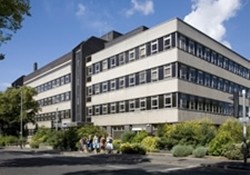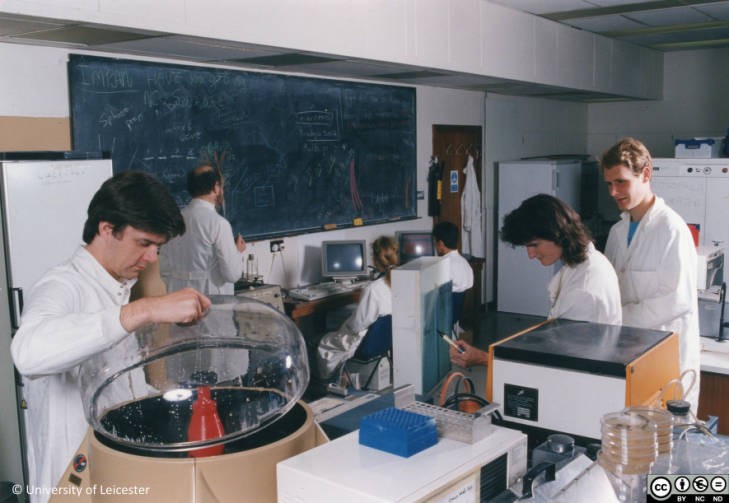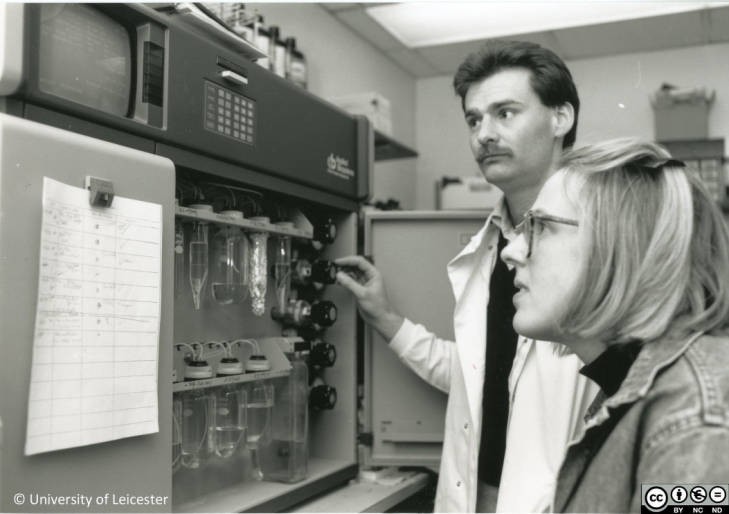The Maurice Shock Building
Introduction
Author-Uploaded Audio
Listen to a narration of this entry's description by University of Leicester: Archives and Special Collections User.
Text-to-speech Audio
Images
The Maurice Shock Building

Bio chemistry lab, Maurice Shock Building, 1996

Tony Maxwell with a student in a laboratory, 1980s

Backstory and Context
Author-Uploaded Audio
Listen to a narration of this entry's description by University of Leicester: Archives and Special Collections User.
Text-to-speech Audio
The Maurice Shock Building was designed by W.F. Johnson Partners of Leamington Spa and was completed in 1977. The building has a six-story concrete frame with a façade of ribbed concrete panels, which are designed to show some of the weathering patterns. The entrance is defined by a glazed stairwell set within which carries through to the roof. The glazing alternates across the face of the building with Black glazing across the panels. The Maurice Shock Building is linked to the Adrian Building by a bridge that runs across University Road. The building was officially opened by Sir Cyril Clarke, son of Dr Astley Clarke in 1977. In 1994, the building was named the Maurice Shock Medical Sciences Building, after Sir Maurice Shock, who was Vice Chancellor of the University from 1977 to 1987. The building is home to the to the laboratories and teaching accommodation for the Medical School within the College of Medicine, Biological Sciences and Psychology.
Sources
Lyons. A, 2017. 'The Architecture of the Universities of Leicester.
University of Leicester 2020, 'The Maurice Shock Building'. https://www2.le.ac.uk/departments/biologicalsciences/images/about-the-school/27-msc00001.jpg/view
https://www2.le.ac.uk/services/rooms/maurice-shock
University of Leicester Special Collections - ULA_FG3_5_3
University of Leicester Special Collections - ULA_FG3_5_1
